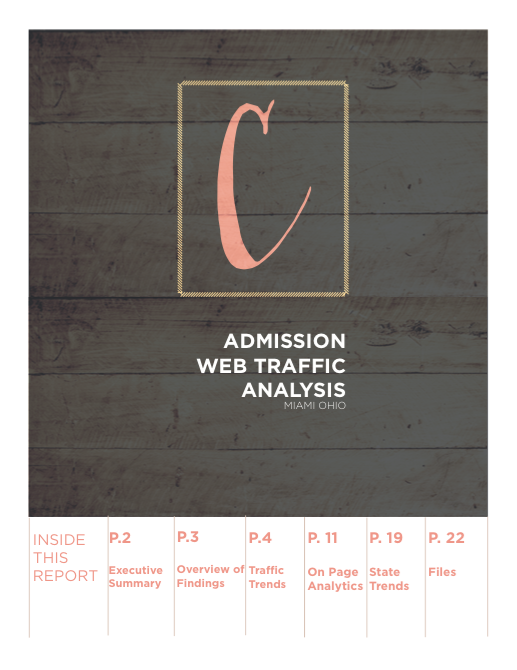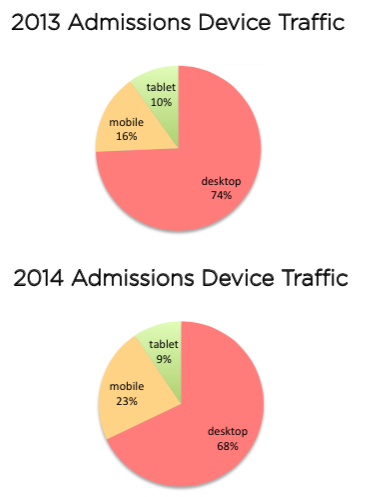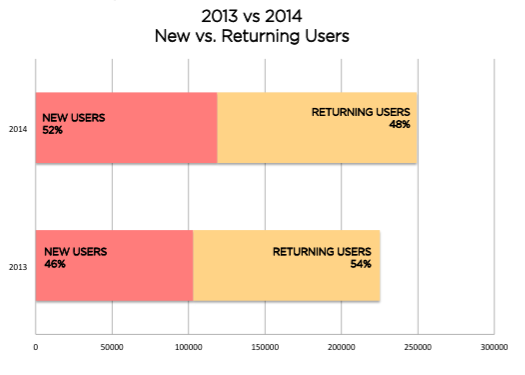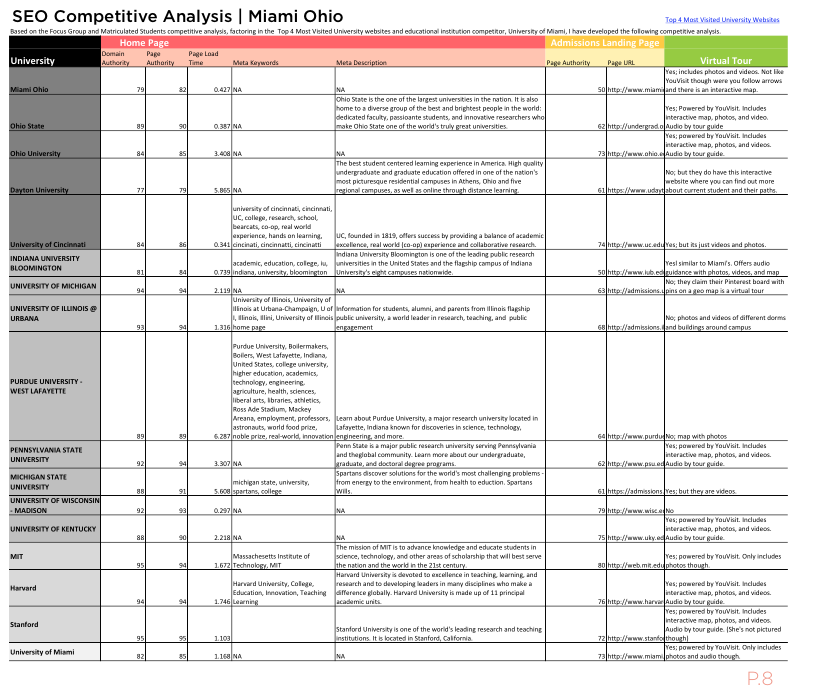Analytics, Digital Marketing
Miami Ohio Admissions
Process
Analytics
As the cost of undergraduate education continues to rise, high school seniors have started to expand their college search beyond four-year traditional undergraduate programs. As enrollment for community colleges, on line degree programs, and technical institutes increases, four-year under- graduate institutions must remain competitive and appealing in the college search process. During a high school senior’s college search process, it’s imperative for undergraduate admissions to appear in search engine results and offer a user-friendly website to navigate. Engaging qualified students through Miami University’s website during the discovery phrase will ensure intellectually curious, academically-rigorous, highly motivated undergraduates who will choose to enroll as first year students. I wanted to find traffic trends within Miami University’s admission web pages.
Based on the insight gathered from admission’s web traffic in the last 3 months of 2014 and comparing this data to traffic generated in 2013, I recommended the following to the Miami Ohio Admissions Department:
1. Given the 10% increase in web traffic to admission web pages in 2014, I predicts that Miami Admissions will receive more applications than last year (i.e. more than 25,000 students will apply for the Class of 2018).2. Considering that the majority of users land on the home page (miamioh.edu) before navigating to an admission’s web page, Miami’s “Hot Shots” or featured social media photos should be updated 8AM Monday. Most prospective students visit the website on either Monday or Tuesday morning.
3. While the 68% of traffic uses a desktop, mobile traffic increased by 7% in 2014. 11.9% of mobile traffic lands on Miami’s Tuition and Cost web page. Unfortunately, this web page is not responsive, providing a poor user experience on a mobile device. From Spring 2014 to Fall 2014, the keyword “Miami University tuition” received a 29% lift in search volume. Thus, validating that prospective students are actively searching for Mi- ami’s Tuition and Costs. This web page is a priority in applicant’s college search process and must be updated to the brand web page standards.
4. 74% of all traffic in September - November comes from organic searches. 85% of these prospective students find Miami’s website via Google. Considering that Google is the dominate search engine referring traffic to Miami’s website, any on-page SEO efforts should be optimized for Google’s ranking factors. The Chinese search engine, Baidu, uses similar criteria as Google does for it’s search engine rankings, so by optimizing for Google, Miami is essentially optimizing for Baidu.
5. In both 2013 and 2014, Miami Admissions experienced a peak in traffic to the “Accepted Miami Fall” home page during the last 3 days of April. As students are evaluating their options and deciding to commit, these 3 days are critical to enrollment. Admissions should consider different imagery or messaging to have a stronger call to action for students still on the fence. (i.e. 3 days left to commit, Still undecided? Click here!)
Search Engine Optimization
During the college search process, do American and international students easily confused Miami University with University of Miami? Do out of state students realize that we are located in Oxford, Ohio? What keywords do students use to find miamioh.edu?
After analyzing Miami’s admission web traffic and discovering that 74% of visits come from organic search, Charlotte wanted to understand Miami’s current search engine optimization (SEO) efforts, analyze competitors’ on- page SEO tactics, and use Google Analytics + Keyword Planner to discover potential Miami University keywords and their search volume.In order to perform an analysis of Miami’s search engine optimization efforts and make strategic recommendations moving forward, I designed a 5 step SEO audit following industry best principles.
1. Identify target audience2. Define competitors
3. Spy on (and learn from) your competitors
4. Discover new keywords
5. On-page audit
From Google’s keyword planner tool and high traffic keywords between January 2013 – November 2014, I complied a list of 55 keywords that Miami Admissions should optimize for. Additionally, I created an template to optimize admissions webpage for American and Chinese search engines, offering suggestions on specific title tags, meta keywords/descriptions, and h1 headings.









